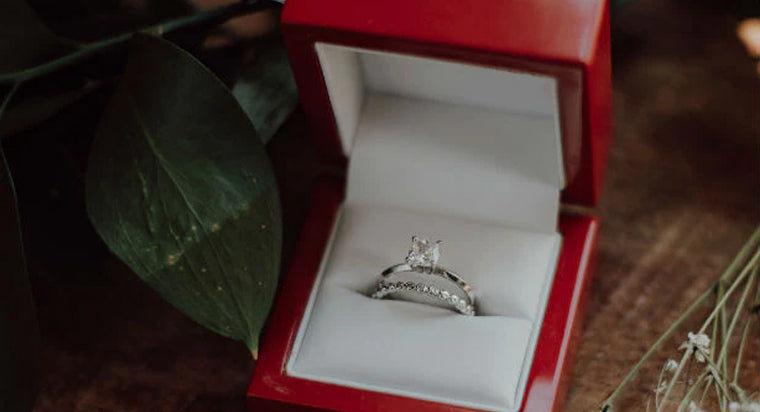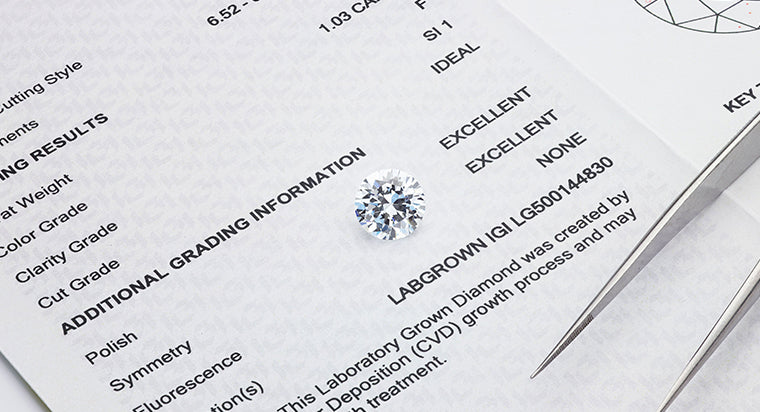So, How Exactly Are Diamonds Made?

The old adage, “Diamonds are a girl’s best friend,” is one that is echoed by many recipients of the beloved gemstones the world over. It addresses the love that women, in particular, have for diamonds. These stones are used in rings, earrings, chains, or any other type of jewelry that can accommodate a stone, but have you ever truly wondered how are diamonds made? Or just where are the rocks that you love so much come from?
TABLE OF CONTENTS
What are diamonds made of?
Chemically and physically diamonds that are mined or manufactured are the same. For over a century, the technology of growing these stones has been experimented with but has just recently been perfected. The art of creating lab-made versions with the quality of gems in a modern lab using advances in technology enables diamond creators to get products that are superior in quality to those that were mined in the Earth.
Diamonds which are considered lab-grown, artificial, cultivated, or synthetic diamonds will have the same look and feel of a natural diamond because of the carbon atom structures that they consist of. The diamonds that are created in a lab can show the same characteristics of natural diamond crystals which are produced by Mother Nature's geological processes.
What are the key ingredients necessary for the organic process of diamonds?
During the organic process of creating a lab-grown diamond, acid is placed into a heat and pressure chamber, which is a replica of the natural growth process. The diamond matures within 6 to 10 weeks after it has been crystallized.
World-renowned labs, which certify gemstones that are Earth mined, cut the diamond, polishes and grades it. Laboratories use a combination of techniques in their manufacturing. Chemical vapor disposition is a process that is used on 2-carat diamonds, semiconductors, and optics that are given the same grade as gems.
How are synthetic diamonds made?
The process of creating synthetic diamonds requires the use of carbon-rich gases which are generally pure, in controlled chambers. These carbon-rich gases include methane and are heated until it disintegrates allowing the atoms that are found within the gas, to become separated.
The tiny atoms are made to fall on diamond substrates in layers which then results in rough diamond crystals. This process can last from 6 to 10 weeks.
The CVD research method has become popular in recent years, so now a modified version is frequently used. The process in which chemical reactions are experimented with can differ somewhat. All the variations of the CVD include low-pressure CVD and a few other types of CVD processes.
Synthetic Chocolate Diamonds
Chocolate diamonds are categorized by their cut, color, and clarity in the same way that others are. But it's important to remember they're a brand of one particular manufacturer and are chosen because of their scarcity and the chocolate color.
Le Vian is internationally registered to distribute chocolate diamonds. The history of how they're made rests in the manufacturers’ and managers’ addiction to chocolate. The manufacturers named the diamond in 2000, but registered it in 2008 and maintain all the rights and trademark worldwide, for this registration. They employ attorneys to protect, and if possible prosecute counterfeiters of such a brand. Chocolate stones are brown diamonds, which are more common than other types.
How are colored stones made?
Colored diamonds are created from different chemical processes. If there is a slight disfiguration, it becomes a colored diamond.
Maybe you’ve wondered how blue stones form. This is done if boron is added, with nitrogen added it makes yellow and for green, radiation is naturally derived from rocks traps electrons and turn it green. The voyage of the electrons to the surface causes red and pink shades.
If the question reverts to how black diamonds are made, then the components are diamond, amorphous carbon and graphite. These types are mainly found in Brazil, or in the Central African Republic. Black versions consist of a more porous material than other stones and have a natural black or darker grey color.
Is there any difference in chemical makeup between mined and synthetic stones?
The difference in the chemical makeup of naturally sourced and synthetically-made diamonds are the components that are used in the process of each. These beloved gemstones come in two forms, a geologically processed form, and a man-made or synthetic form. The more expensive being the geologically processed one.
Long story short: These gemstones are chemically the same. Synthetic diamonds are real, they're just not natural. They go through the same process as mined diamonds, except in a lab instead of in the ground.







